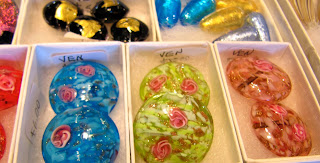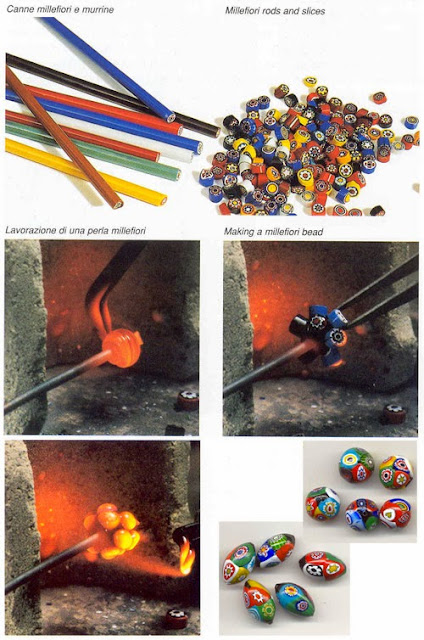Let's look at beading wire first. Beading wire is usually a cable of steel strands encased in a plastic coating. It is mainly used for bead string projects. There are two sizing numbers relating beading wire. The first is the diameter of the wire noted as a decimal in inches (eg. .010 in.). The smaller the number the finer the wire. The second number is the number of strands in the cable. The higher the number the stronger the wire.
 |
| from Soft Flex |
There is beading wire that is flexible enough to be knotable. This will allow you to use it like thread on project that need the strength and durability of beading wire. Maria uses this type of wire in her snowflake ornament.
 |
| Snowflake ornament, beaded by M. Rypan |
Sara Oehler from Soft Flex has a great blog with lots of tips and projects using Soft Flex beading wire.
Before looking at wire work wire, there is one other wire used for stringing. This is memory wire, it is unique for the way the wire is created. It is hardened steel which keeps it shape. Because of this property finishing a project is difficult. You can use pliers the fold over the ends but it can be a frustrating task. The other option is to glue on a finishing bead.
 |
| Memory wire |
Now on to wire work wire. Personally I don't do much of this kind of work, but I have tired it.
 |
| Wrapped Heart Ring, by J. Woolverton |
Let's take a look at the teminology of this wire.
Dead-soft- softest on the hardening scale for wire. Very pliable, so finished piece could be bent out of shape is not handled with care.
Half hard - is stiffer that dead-soft. Still workable and will hold shapes and bends formed in pieces.
Hard - stiffest wire. Shapes with stay permenently with this wire.
Round - most common shape of wire.
Half-round & square - shaped wire for different needs and design possibilities.
Gauge - this is the size of the wire. The higher the number the finer the wire.
There are also a multitude of tools for this type of work; pliers - basic chain nose, flat nose and round nose, specialty tools - sliding pin vise, 3 stepped pliers, double barrel pliers, 3 stepped square tip pliers, ring mandrel and of course flush cutters. Here is a link to a free e-book from Jewelry Making Daily about jewelry making tools.
Basic wire work is worth learning to expand you creative possibilities. Here is a great collection of basic techniques for beaders from Fusion Beads. For more advance techniques check Art Jewelry's collection of tips and a variety of free projects.
This is just the tip of the iceberg for wire and creating with it. Check out what you can find on Pinterest. Hope that you will try something different with wire soon!
Happy Beading (with wire)!























